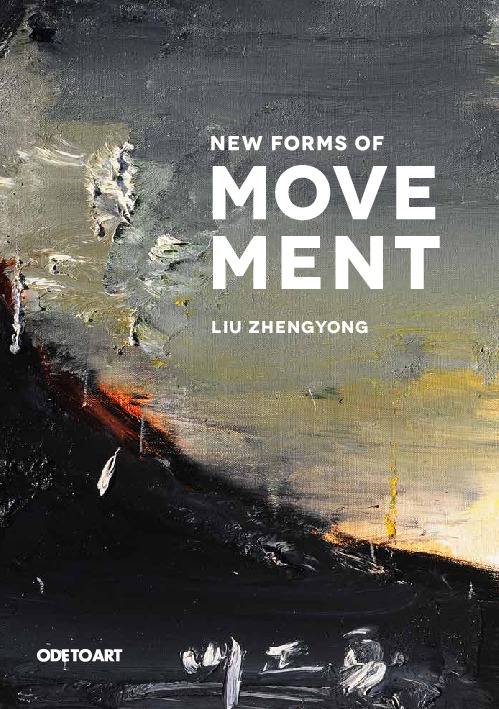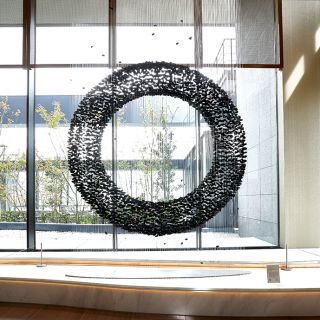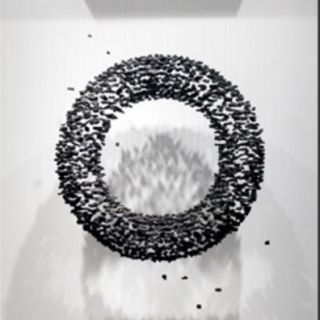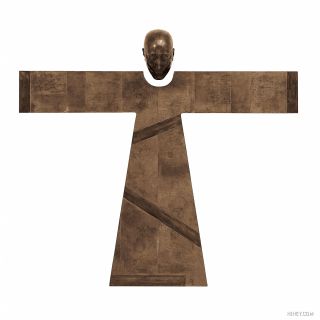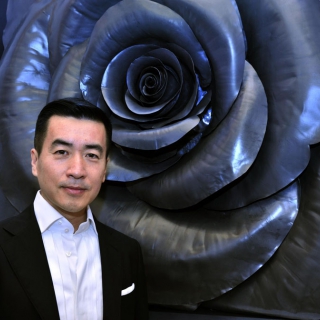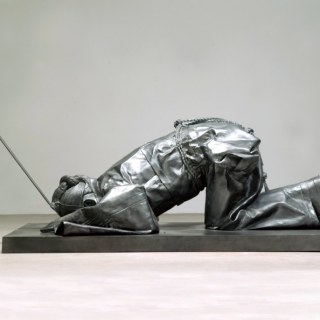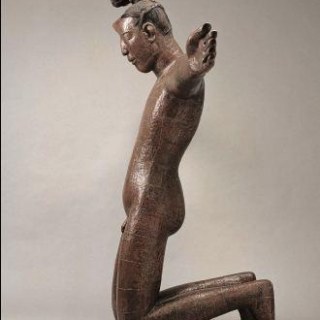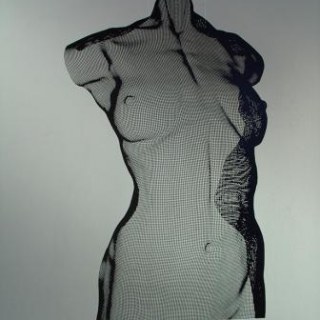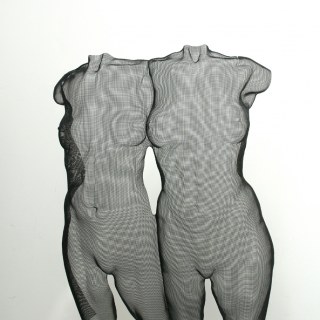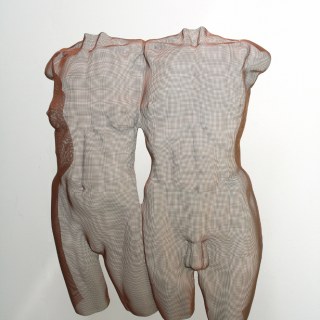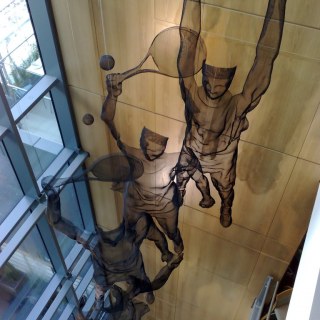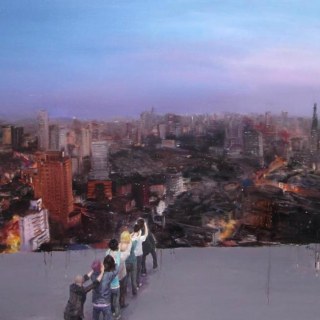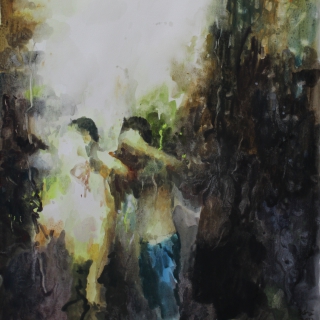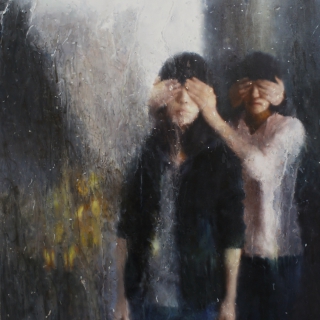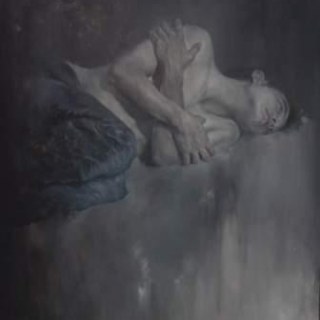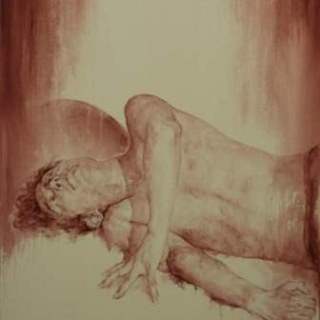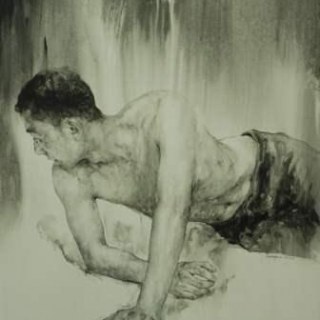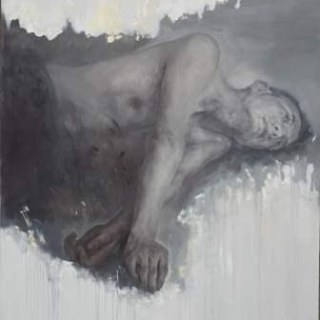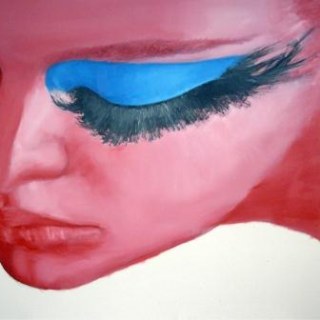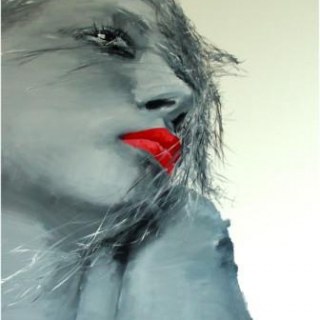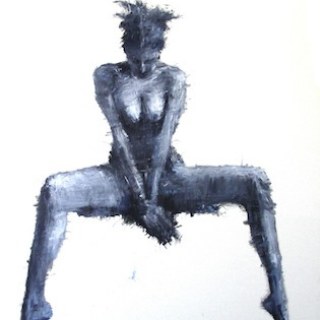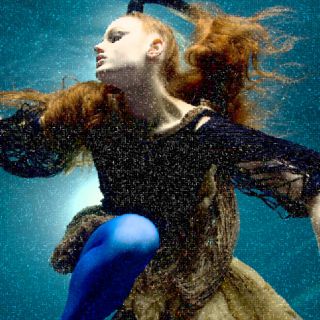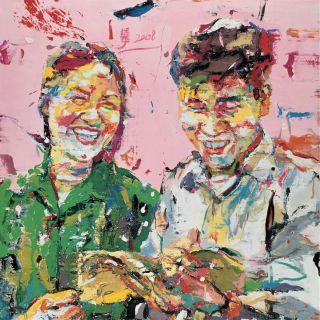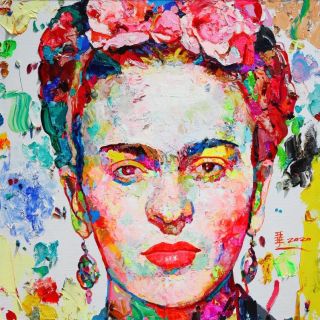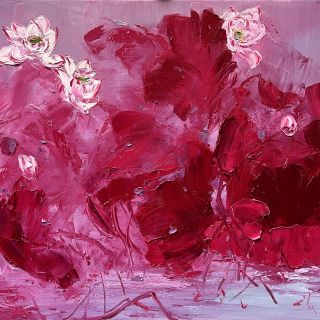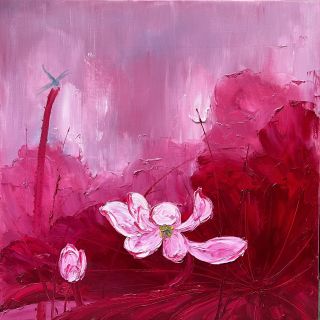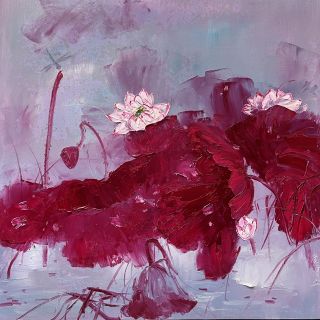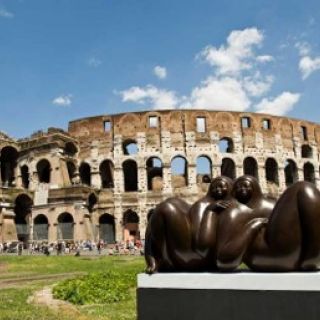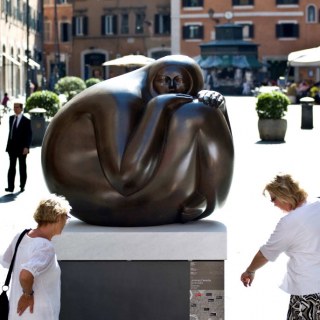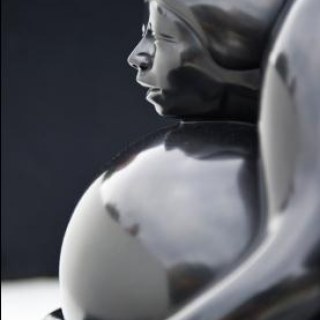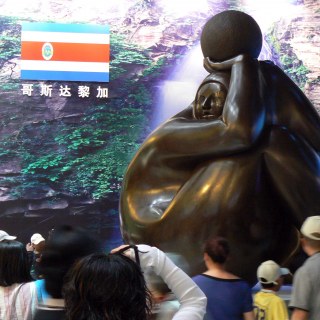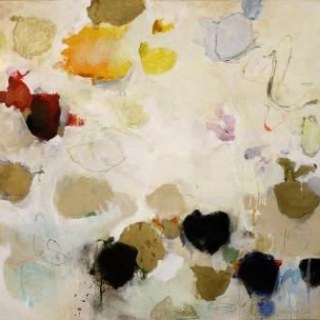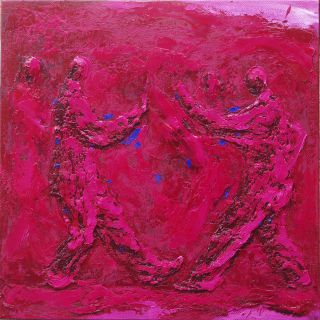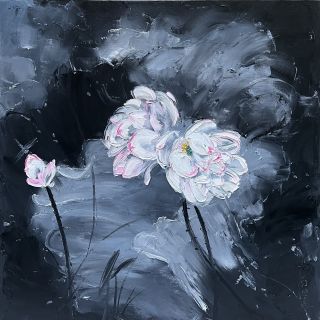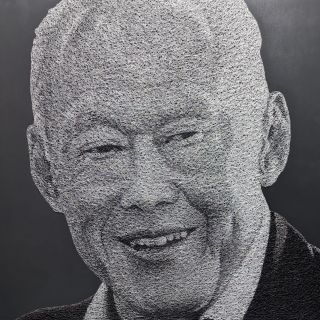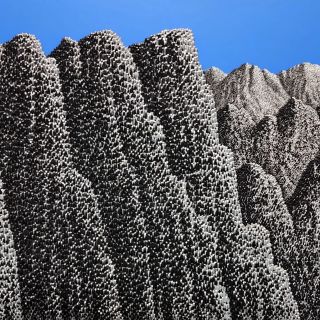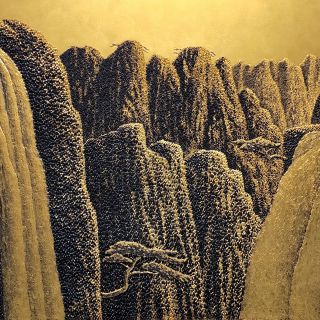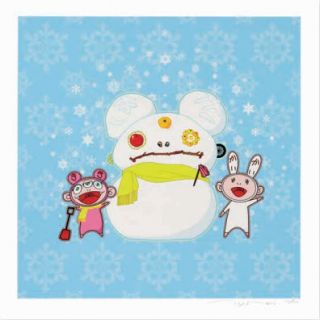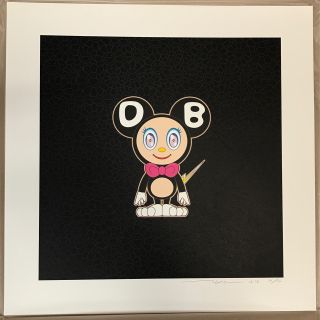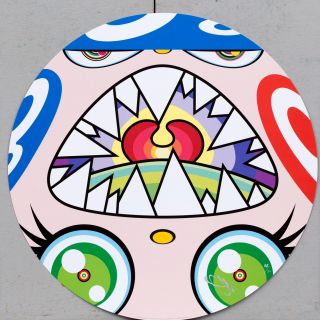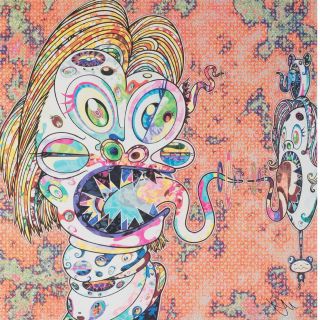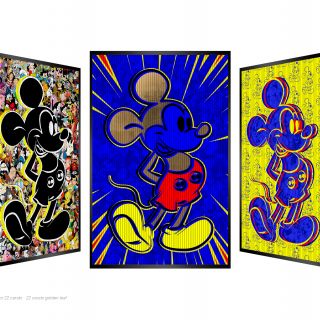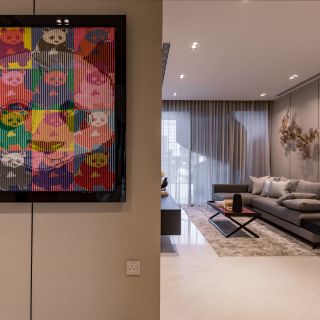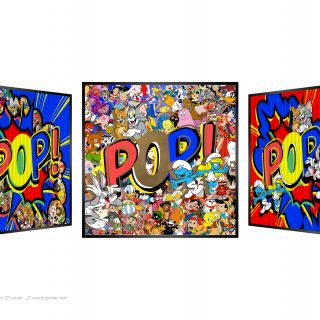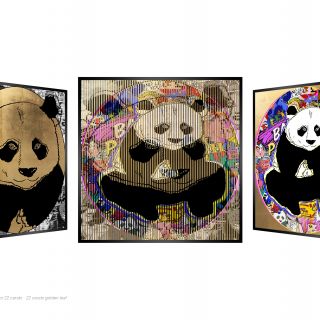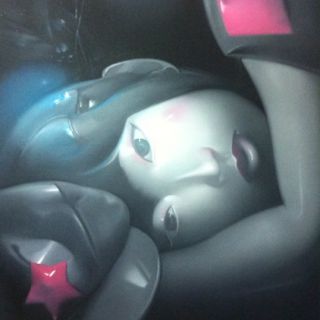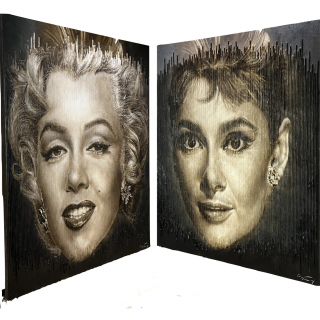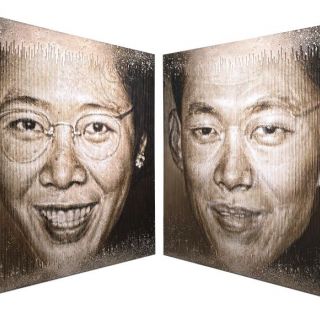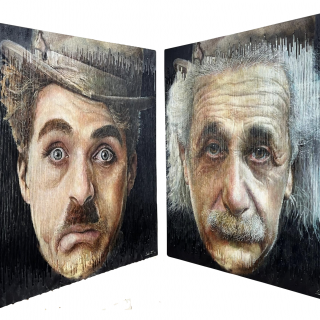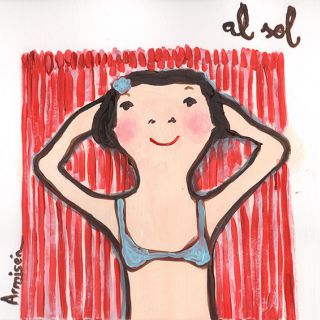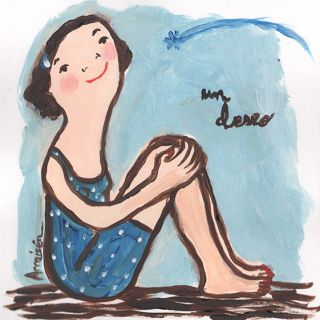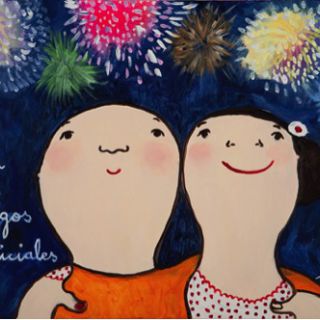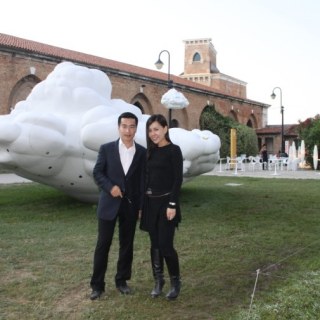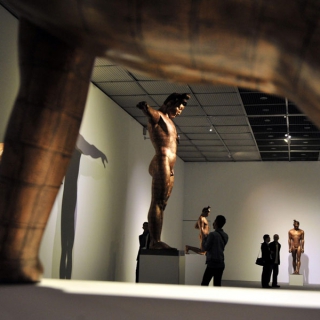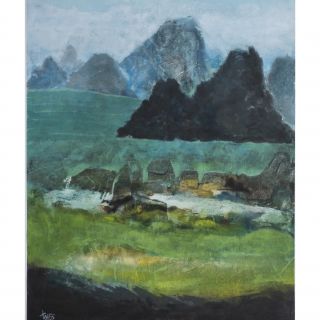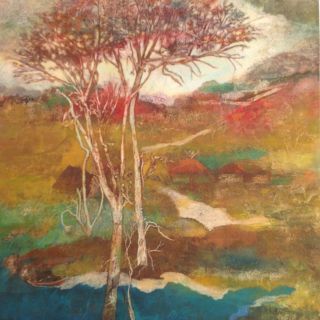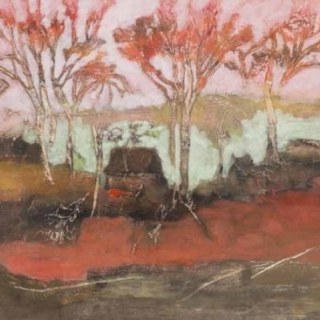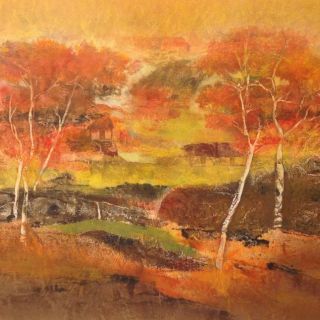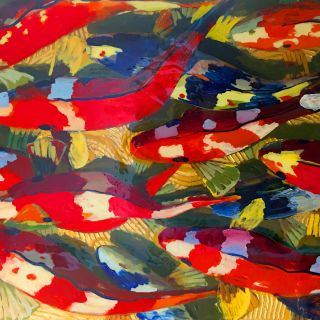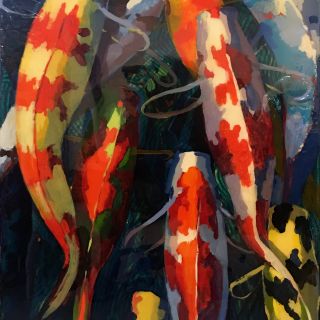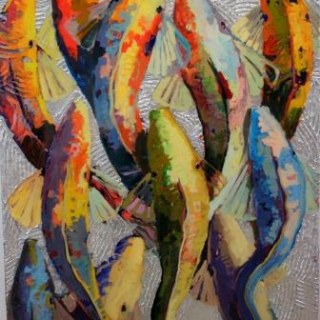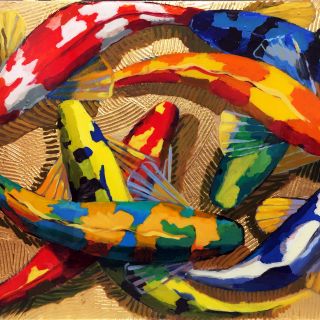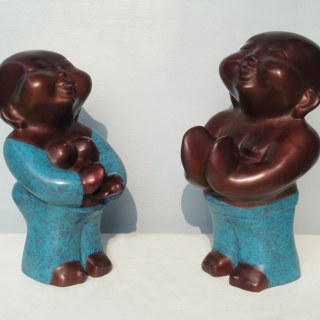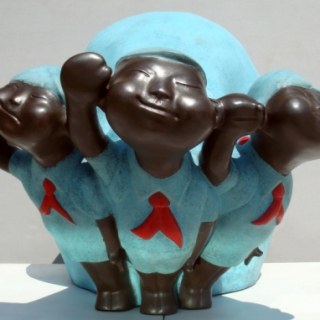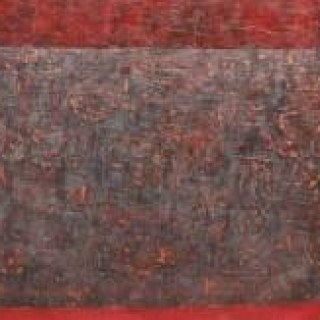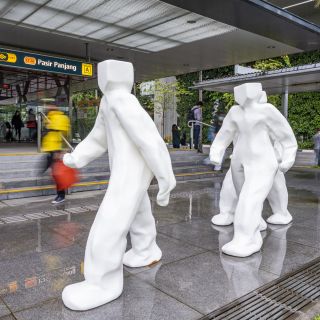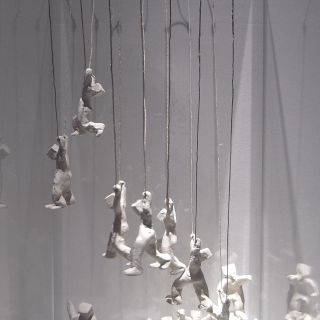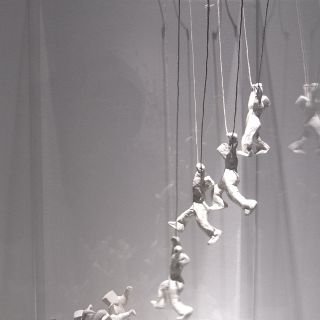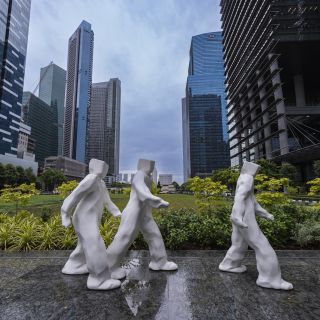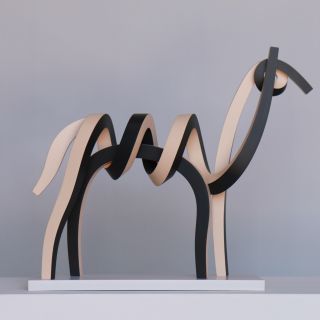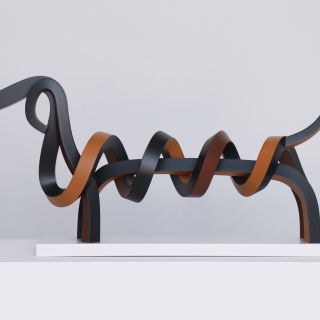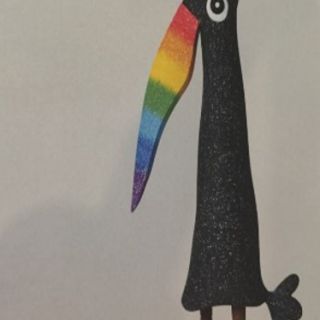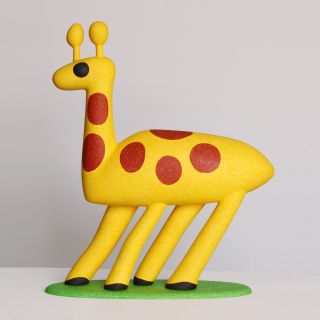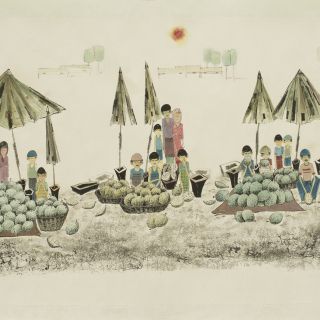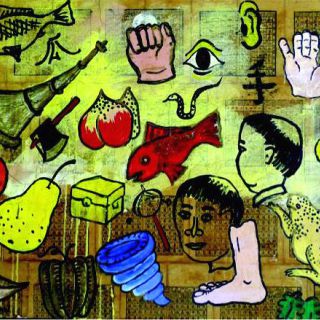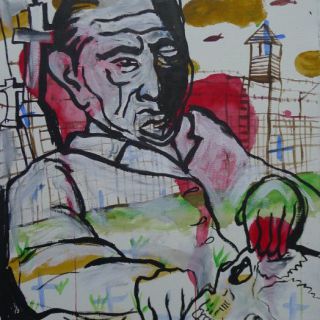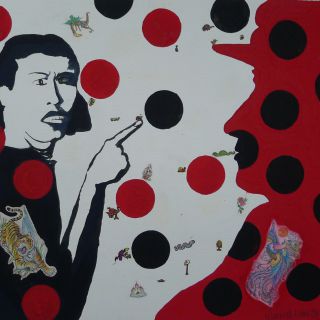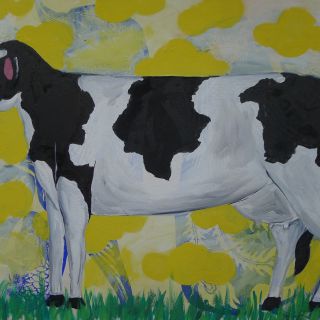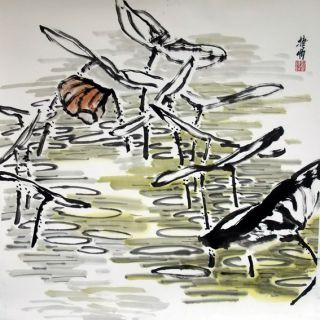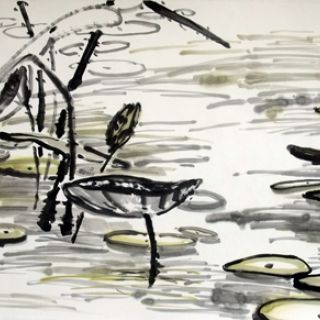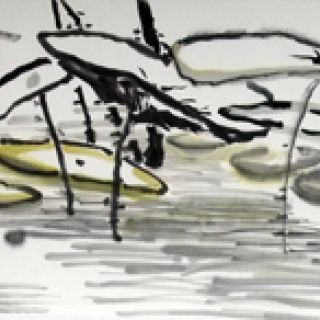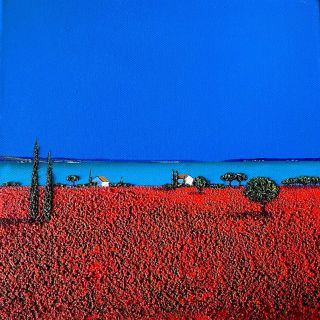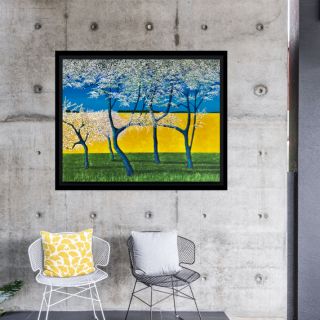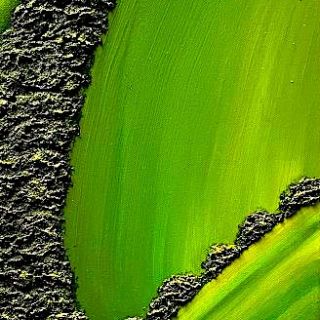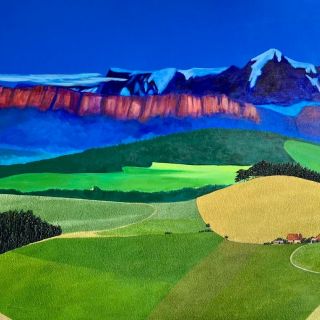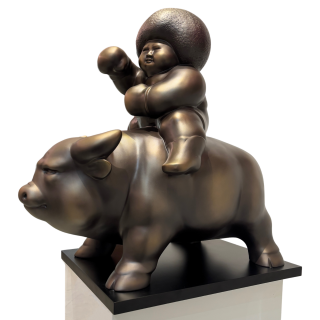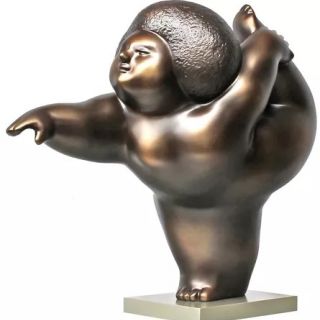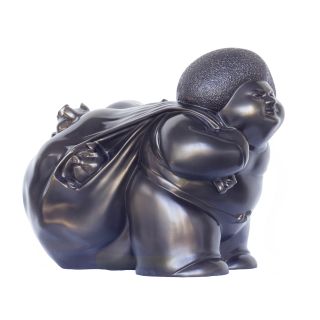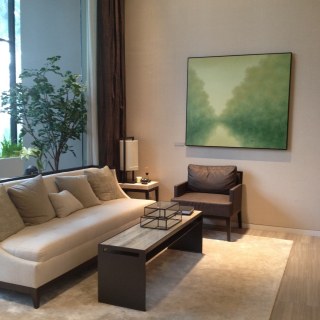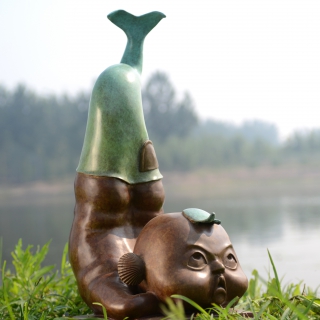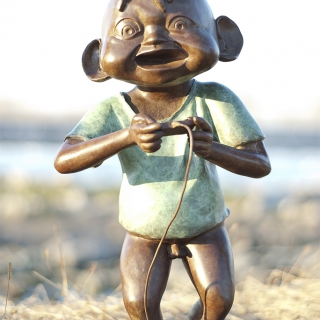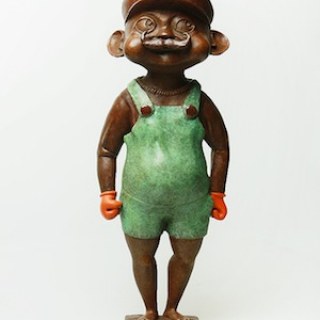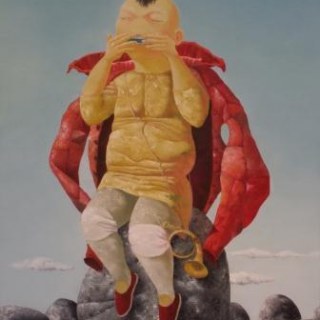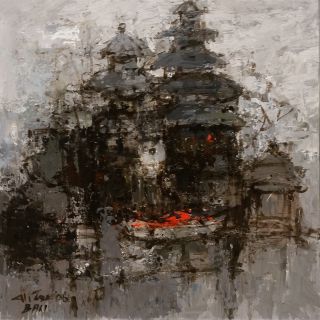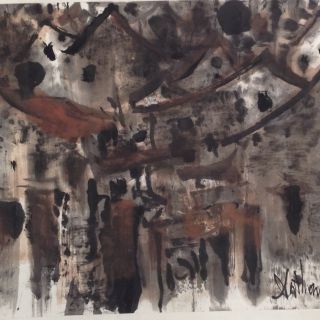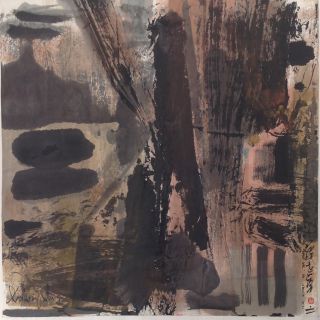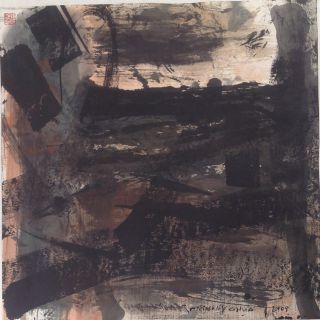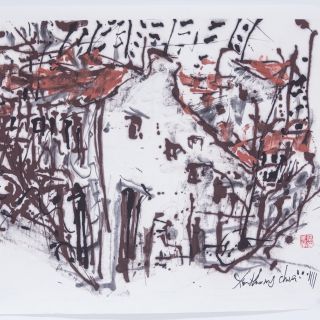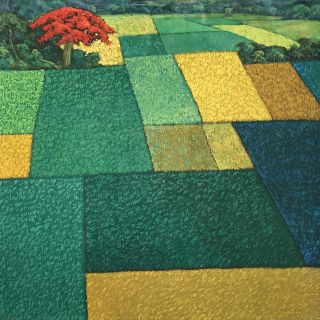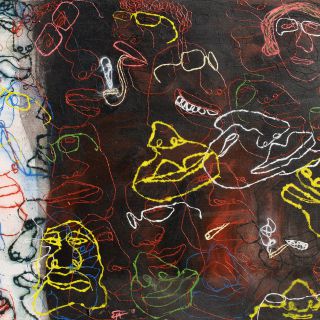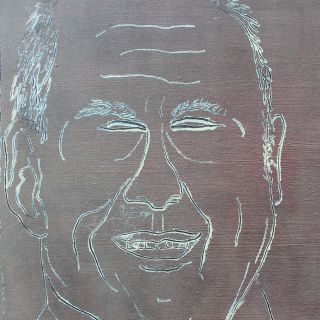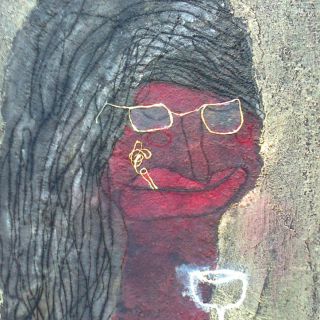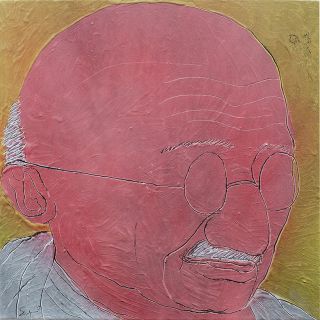
Born in 1980 in Zhuzhou City, Hunan Province, China, Liu
Zheng Hong graduated from Tianjin Academy of Fine Arts in 2004 with a major in
oil painting. Armed with textured movement and a vivid sense of colour, Zheng
Yong channels the most intrinsic of Chinese sensibilities into a distinctly
western medium.
Viewing 12 works by Liu ZhengYong
Sort
Biography 
Biography
Liu Zheng Yong was born in 1980 in Zhuzhou city, Hunan province, in China. He graduated
in 2004 from the Oil Painting Department at Tianjin Art Academy with a Bachelor Degree. He won First Prize in several oil painting scholarships in Shanghai and Tianjin city.
Besides striking visuals, Zheng Yong’s technique highlights his artistic skill and mastery of brushwork and composition. Instilling expression into both colour and stroke, the palpable meaning in his works communicates far beyond the façade of poised perfection, unraveling the quagmire that resides within every being—the source from where all light must emerge. His works are an equilibrium between happiness and sadness, life and death and confusion and enlightenment. With anatomy and busts being his most common subjects, Liu Zheng Yong reveals an expressionist fascination with not only the outpouring of emotion, but the physical manifestation of humanity as well.
Besides striking visuals, Zheng Yong’s technique highlights his artistic skill and mastery of brushwork and composition. Instilling expression into both colour and stroke, the palpable meaning in his works communicates far beyond the façade of poised perfection, unraveling the quagmire that resides within every being—the source from where all light must emerge. His works are an equilibrium between happiness and sadness, life and death and confusion and enlightenment. With anatomy and busts being his most common subjects, Liu Zheng Yong reveals an expressionist fascination with not only the outpouring of emotion, but the physical manifestation of humanity as well.
Exhibitions 
Exhibitions
Solo Exhibition
2022 Liu Zhengyong Solo Exhibition, Leo Gallery, Hong Kong
2020 - 2021 Liu Zhengyong Solo Exhibition, Ri Galerie, Hong Kong
2016 Identity, Hong Kong, China
2016 New Form of Movement, Ode to Art Contemporary, Singapore
2015 Rhizhoma, Beijing, China
2014 Liu Zheng Yong solo exhibition (Museum Paul Valery France)
2012 Who's Sky (Beijing, China 110 Gallery)
2012 Sentinelles (Montpellier France)
2011 Exposition (Lyon France )
Group Exhibitions
2022 Group Exhibition of Leo Gallery Artists: The Expanse, Shanghai, China
2020 Art021 Shanghai Contemporary Art Fair Booth: W17, Shanghai, Singapore
2020 Chinese expresisonist Art, Shanghai, China
2019 Painting Interface, Leo Gallery, Shanghai, China
2014 Art Cologne (Cologne Germany)
2014 China Youth Contemporary Art (Asian Museum in Nice, France)
2014 Biennale China-Italia (China, Beijing)
2014 Art fair Art Paris (Grand Palais France)
2013 unbounded—Artworks by Chinese Contemporary Young Artists (Berlin Germany)
2013 Strasbourg international gallery exhibition (Strasbourg, France)
2013 55th la Biennale di Venezia (Palazzo Mora ,Venice, Italy)
2013 Lille International Gallery Exposition ( Lille France )
2012 Strasbourg international gallery exhibition (Strasbourg, France )
2012 wind direction(Russia Moscow Museum of Modern Art)
2012 Normandy European Art Film Festival (Normandy France)
2012 Lille International Gallery Exposition (Lille France )
2011 Lyon, France Biennale (Lyon, France)
2011 Lille International Gallery Exposition (Lille, France)
2011 Strasbourg International Gallery Exhibition (Strasbourg, France)
2011 From China's Contemporary Art (Montpellier, France)
2010 New Wave of Chinese Contemporary Art (University of California Museum of Art USA)
2010 Width (Beijing Museum of Contemporary Art)
2010 Works on Paper Will (Barcelona, Spain)
2009 Lately history contemporary art exhibition (Royal Art Museum in Tours City France, France)
2009 First Youth Art Biennial Exhibition of Chongqing (China Chongqing Exhibition Center)
2009 China's critics nomination exhibition (China Beijing Museum of Contemporary art)
2008 Space opening of ‘Parks’ art project by China, Korea, Japan. (Parks Art Space, Beijing)
2008 Opening of international annual exhibition in ‘Son shine’ Art Museum (China ‘Son shine’ Art Museum Beijing)
2008 Live in Sonzhuang (Sonzhuang Museum)
2022 Liu Zhengyong Solo Exhibition, Leo Gallery, Hong Kong
2020 - 2021 Liu Zhengyong Solo Exhibition, Ri Galerie, Hong Kong
2016 Identity, Hong Kong, China
2016 New Form of Movement, Ode to Art Contemporary, Singapore
2015 Rhizhoma, Beijing, China
2014 Liu Zheng Yong solo exhibition (Museum Paul Valery France)
2012 Who's Sky (Beijing, China 110 Gallery)
2012 Sentinelles (Montpellier France)
2011 Exposition (Lyon France )
Group Exhibitions
2022 Group Exhibition of Leo Gallery Artists: The Expanse, Shanghai, China
2020 Art021 Shanghai Contemporary Art Fair Booth: W17, Shanghai, Singapore
2020 Chinese expresisonist Art, Shanghai, China
2019 Painting Interface, Leo Gallery, Shanghai, China
2014 Art Cologne (Cologne Germany)
2014 China Youth Contemporary Art (Asian Museum in Nice, France)
2014 Biennale China-Italia (China, Beijing)
2014 Art fair Art Paris (Grand Palais France)
2013 unbounded—Artworks by Chinese Contemporary Young Artists (Berlin Germany)
2013 Strasbourg international gallery exhibition (Strasbourg, France)
2013 55th la Biennale di Venezia (Palazzo Mora ,Venice, Italy)
2013 Lille International Gallery Exposition ( Lille France )
2012 Strasbourg international gallery exhibition (Strasbourg, France )
2012 wind direction(Russia Moscow Museum of Modern Art)
2012 Normandy European Art Film Festival (Normandy France)
2012 Lille International Gallery Exposition (Lille France )
2011 Lyon, France Biennale (Lyon, France)
2011 Lille International Gallery Exposition (Lille, France)
2011 Strasbourg International Gallery Exhibition (Strasbourg, France)
2011 From China's Contemporary Art (Montpellier, France)
2010 New Wave of Chinese Contemporary Art (University of California Museum of Art USA)
2010 Width (Beijing Museum of Contemporary Art)
2010 Works on Paper Will (Barcelona, Spain)
2009 Lately history contemporary art exhibition (Royal Art Museum in Tours City France, France)
2009 First Youth Art Biennial Exhibition of Chongqing (China Chongqing Exhibition Center)
2009 China's critics nomination exhibition (China Beijing Museum of Contemporary art)
2008 Space opening of ‘Parks’ art project by China, Korea, Japan. (Parks Art Space, Beijing)
2008 Opening of international annual exhibition in ‘Son shine’ Art Museum (China ‘Son shine’ Art Museum Beijing)
2008 Live in Sonzhuang (Sonzhuang Museum)
Critique 
Critique
The Enthusiasm of Returning: Liu Zhengyong’s Oil Painting
After the 20th century, Expressionism painting in China was on the edges of art due to the flourish of image paintings. There were two reasons as to why Expressionism was gradually on the wane. Firstly, the change of social environment played a part. The events in the art field in1989 resulted in the smash of cultural enthusiasm which artists once held, they turned from impetuous to calm as they lost the grounds of Expressionism. Secondly, China attracted the attention of the world because of the special event which happened in 1989. As a result, intangibly, Chinese contemporary art enjoyed a wider market and a special Chinese art image wast formed. The enthusiasm of expression turned to the power of image, and the concept of painting became the vital element of art instead of the art language itself. Just as some critics said, the 1990s in China was the era that Chinese contemporary art walked into an era of Iconology. However, there were also changes that happened in the Chinese contemporary art field invisibly in recent years. Among them, the most outstanding one was the return of beauty in form of which typical artists included Zeng Fanzhi, Zhou Chunya, Liu Wei, and Zhang Fangbai. Besides them, there were far more young artists eager to explore a new land full of the enthusiasm of self-expression and Liu Zhengyong is one of them. Liu is a young artist who was born in '80s. After graduating from Tianjin Academy of Fine Art, he has being a freelance artist till now. Whether in Tianjin or Beijing, he has always maintained his artistic pursuits, which involve maintaining a consistency between enthusiasm and the way of expression. Many of Liu’s works give me a feeling that he has always had an original impulse and is seldom affected by popular trends in recent society.
It can be said that it’s a kind of luck for him. As one of the after '80s, his maturity has just caught up with the stable period of development in China. Therefore, when carrying out his artistic idea, he could avoid uneasy factors that previous artists faced and pay more attention to a theme of spirit and explore a personal art style. The external condition is one of the factors in an artist’s career, however, internal factors are more important than external ones for creative artists. Liu’s art, in terms of his style, is Expressionism. However, Expressionism is a general concept which contains more profound content, so we should treat it specially rather than generally. In terms of Liu’s art, his internal meaning comes close to traditional Chinese painting. He pays more attention to the essence of Chinese traditional painting, for example, yi qi (a standard of good paintings in ancient China), and shen si (images such as mountains or people in traditional Chinese paintings - in a state that is both similar and dissimilar to its original form.) It can be said that, Liu expresses some traditional practices by use of a contemporary method and the only difference is he chooses oil painting materials as his tool. Certainly, different materials will lead a different art style, so Liu’s painting does not simply returns to tradition, but absorbs valuable concepts and learns from them. By knowing this, he can present the inner feeling of the contemporary Chinese from a deeper cultural level. Liu chooses Expressionism which is close to abstract painting because of his complex psychological feelings. For only yi (a kind of inner feeling) can express shen (the existent art style), and only shen can depict the abundance of humanity's sensibilities deeply. What we get from the Expressionism is not the existent objects (shapes, colors), but a more profound sensibility. Liu’s paintings are abstract with solid colors, whether they are portraits or scenery. The deep and heavy feelings which are reflected are similar to the complex experiences we encounter in society. Compared with popular images, it shows the force of expression, which is the bridge between the emotion and spirit of this era. Perhaps this is the main reason why recent Chinese contemporary art field is returning to the beauty in form. Along with social development, no matter the what the world view is or the views of artists themselves, the time of the "image of China" is over. What we need now is more enthusiasm channeled towards expressing emotion which could depict ourselves better.
By Yang Wei Tongzhou
After the 20th century, Expressionism painting in China was on the edges of art due to the flourish of image paintings. There were two reasons as to why Expressionism was gradually on the wane. Firstly, the change of social environment played a part. The events in the art field in1989 resulted in the smash of cultural enthusiasm which artists once held, they turned from impetuous to calm as they lost the grounds of Expressionism. Secondly, China attracted the attention of the world because of the special event which happened in 1989. As a result, intangibly, Chinese contemporary art enjoyed a wider market and a special Chinese art image wast formed. The enthusiasm of expression turned to the power of image, and the concept of painting became the vital element of art instead of the art language itself. Just as some critics said, the 1990s in China was the era that Chinese contemporary art walked into an era of Iconology. However, there were also changes that happened in the Chinese contemporary art field invisibly in recent years. Among them, the most outstanding one was the return of beauty in form of which typical artists included Zeng Fanzhi, Zhou Chunya, Liu Wei, and Zhang Fangbai. Besides them, there were far more young artists eager to explore a new land full of the enthusiasm of self-expression and Liu Zhengyong is one of them. Liu is a young artist who was born in '80s. After graduating from Tianjin Academy of Fine Art, he has being a freelance artist till now. Whether in Tianjin or Beijing, he has always maintained his artistic pursuits, which involve maintaining a consistency between enthusiasm and the way of expression. Many of Liu’s works give me a feeling that he has always had an original impulse and is seldom affected by popular trends in recent society.
It can be said that it’s a kind of luck for him. As one of the after '80s, his maturity has just caught up with the stable period of development in China. Therefore, when carrying out his artistic idea, he could avoid uneasy factors that previous artists faced and pay more attention to a theme of spirit and explore a personal art style. The external condition is one of the factors in an artist’s career, however, internal factors are more important than external ones for creative artists. Liu’s art, in terms of his style, is Expressionism. However, Expressionism is a general concept which contains more profound content, so we should treat it specially rather than generally. In terms of Liu’s art, his internal meaning comes close to traditional Chinese painting. He pays more attention to the essence of Chinese traditional painting, for example, yi qi (a standard of good paintings in ancient China), and shen si (images such as mountains or people in traditional Chinese paintings - in a state that is both similar and dissimilar to its original form.) It can be said that, Liu expresses some traditional practices by use of a contemporary method and the only difference is he chooses oil painting materials as his tool. Certainly, different materials will lead a different art style, so Liu’s painting does not simply returns to tradition, but absorbs valuable concepts and learns from them. By knowing this, he can present the inner feeling of the contemporary Chinese from a deeper cultural level. Liu chooses Expressionism which is close to abstract painting because of his complex psychological feelings. For only yi (a kind of inner feeling) can express shen (the existent art style), and only shen can depict the abundance of humanity's sensibilities deeply. What we get from the Expressionism is not the existent objects (shapes, colors), but a more profound sensibility. Liu’s paintings are abstract with solid colors, whether they are portraits or scenery. The deep and heavy feelings which are reflected are similar to the complex experiences we encounter in society. Compared with popular images, it shows the force of expression, which is the bridge between the emotion and spirit of this era. Perhaps this is the main reason why recent Chinese contemporary art field is returning to the beauty in form. Along with social development, no matter the what the world view is or the views of artists themselves, the time of the "image of China" is over. What we need now is more enthusiasm channeled towards expressing emotion which could depict ourselves better.
By Yang Wei Tongzhou
Recently viewed

Stay connected.
Sign up to our newsletter for updates on new arrivals and exhibitions



